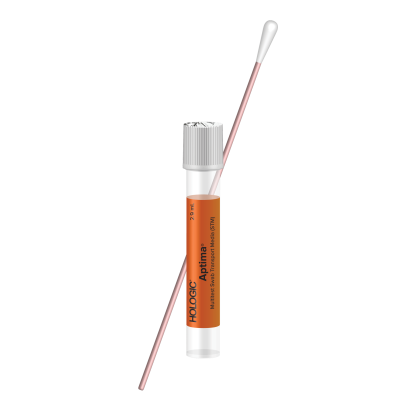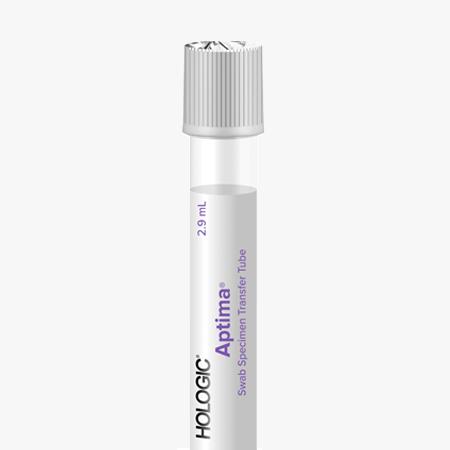Neisseria gonorrhoeae (NG) NAAT*
Specimen Requirements
Call Rutland Regional Medical Center Laboratory Customer Service at 802-747-1771 to obtain Specimen Cups, Multitest Swabs or ThinPrep® Pap/PreservCyt® Media
Specimen Type: Vaginal, Throat, Rectal 
Container/Tube: Aptima Multitest Swab (Orange Tube)
Specimen Volume: Entire specimen
Collection Instructions: Follow instructions on Aptima Multitest Vaginal Collection Guide
Aptima Multitest Throat Collection Guide
Aptima Multitest Rectal Collection Guide
Stability: Ambient 30 days
Specimen Type: Male Urethral and Endocervical 
Container/Tube: Aptima Unisex Swab (Blue Swab)
Specimen Volume: Entire specimen
Collection Instructions: Follow instructions on Aptima Unisex Swab Collection Guide
Specimen Type: Urine (Male or Female)
Container/Tube: Sterile Urine Cup
Specimen Volume: 30-40 mL
Collection Instructions: Collect 30-40 mL first, dirty urine
Reference Aptima Male and Female Urine Specimen Collection for Lab
Stability: Refrigerated 24 hours
Specimen Type: Vaginal Pap collection
Container/Tube: ThinPrep® Pap/PreservCyt® Media
Specimen Volume: Entire specimen
Collection Instructions: Collect specimen without lubricant
Stability: Ambient 30 days
Performing Laboratory
Rutland Regional Medical Center Laboratory
Reference Values
Negative
Day(s) Performed
Monday to Friday
Analytical Time:
3-7 days
Methodology
The Hologic Panther Aptima Combo 2 assay combines the technologies of target capture, TMA, and DKA.
Test Classification and CPT Coding
CPT: 87591
LOINC: 60256-5
Order Code: RMCNGNAAT
Result Code: RMCL802770
Result Name: Neisseria gonorrhoeae RNA NAAT
Specimen Transport Temperature
Urine: Refrigerated 24 hours
Multitest and Unisex Swab: Ambient 30 days
ThinPrep® Pap/PreservCyt® Media: Ambient 30 days
Cautions
Test Limitations:
- A. Use of this assay is limited to personnel who have been trained in the procedure. Failure to follow the instructions given in this package insert may result in erroneous results.
- B. The effects of tampon use, douching, and specimen collection variables have not been assessed for their impact on the detection of CT or GC.
- C. The presence of mucus in endocervical specimens does not interfere with the detection of CT or GC by the Aptima Combo 2 assay. However, to ensure collection of cells infected with CT, columnar epithelial cells lining the endocervix should be sampled. If excess mucus is not removed, sampling of these cells is not ensured.
- D. Vaginal swab and PreservCyt solution liquid pap specimen sampling is not designed to replace cervical exams and endocervical specimens for diagnosis of female urogenital infections. Patients may have cervicitis, urethritis, urinary tract infections, or vaginal infections due to other causes or concurrent infections with other agents.
- E. The Aptima Combo 2 assay is not intended for the evaluation of suspected sexual abuse or for other medico-legal indications. For those patients for whom a false positive result may have adverse psycho-social impact, the CDC recommends retesting (4).
- F. Reliable results are dependent on adequate specimen collection. Because the transport system used for this assay does not permit microscopic assessment of specimen adequacy, training of clinicians in proper specimen collection techniques is necessary. Refer to the package insert of the appropriate Hologic specimen collection kit.
- G. Therapeutic failure or success cannot be determined with the Aptima Combo 2 assay since nucleic acid may persist following appropriate antimicrobial therapy.
- H. Results from the Aptima Combo 2 assay should be interpreted in conjunction with other laboratory and clinical data available to the clinician.
- I. A negative result does not preclude a possible infection because results are dependent on adequate specimen collection. Test results may be affected by improper specimen collection, technical error, specimen mix-up, or target levels below the assay limit of detection.
- J. The Aptima Combo 2 assay provides qualitative results. Therefore, a correlation cannot be drawn between the magnitude of a positive assay signal and the number of organisms in a specimen.
- K. Performance of the Aptima Specimen Transfer kit was not evaluated for testing the same PreservCyt solution liquid pap specimen both before and after ThinPrep pap processing.
- L. PreservCyt solution liquid pap specimens processed with instruments other than the ThinPrep 2000 processor have not been evaluated for use in Aptima assays.
- M. Patient-collected vaginal swab specimens are an option for screening women when a pelvic exam is not otherwise indicated.
- N. The patient-collected vaginal swab specimen application is limited to clinical settings where support/counseling is available to explain procedures and precautions.
- O. The Aptima Combo 2 assay has not been validated for use with vaginal swab specimens collected by patients at home.
- P. The performance of the Aptima Combo 2 assay has not been evaluated in adolescents less than 14 years of age.
- Q. The performance of the Panther system has not been evaluated at altitudes above 6561 feet (2000 m).
- R. There is no evidence of degradation of nucleic acids in PreservCyt solution. If a PreservCyt solution liquid pap specimen has small numbers of CT and GC cellular material, uneven distribution of this cellular material may occur. Also, when compared to direct sampling with the Aptima Specimen Transport Medium, the additional volume of PreservCyt solution results in greater dilution of the sample material. These factors may affect the ability to detect small numbers of organisms in the collected material. If negative results from the specimen do not fit with the clinical impression, a new specimen may be necessary.
- S. Customers must independently validate an LIS transfer process.
- T. First catch female urine specimens are acceptable but may detect up to 10% fewer CT/GC infections when compared with vaginal and endocervical swab specimens (5).
- Taken from product insert: Aptima Combo 2 Assay (Panther System) 20 502446 Rev. 012
Interpretation
A positive result indicates the presence of Neisseria gonorrhea RNA
A negative result indicates that RNA for N gonorrhea was not detected in the specimen.
The predictive value of an assay depends on the prevalence of the disease in any particular population. In settings with a high prevalence of sexually transmitted disease, positive assay results have a high likelihood of being true-positives. In settings with a low prevalence of sexually transmitted disease, or in any setting in which a patient's clinical signs and symptoms or risk factors are inconsistent with chlamydial or gonococcal urogenital infection, positive results should be carefully assessed and the patient retested by other methods, if appropriate.
Performance Data:
|
Sample |
NG Sensitivity (%) |
NG Specificity (%) |
|
Male Urine |
100 |
99.3 |
|
Female Urine |
95.6 |
99.7 |
|
Female Vaginal Swab, clinician |
100 |
99.7 |
|
Female Vaginal Swab, Pt obtain |
96.7 |
100 |
|
Female Swab in ThinPrep media |
96.7 |
100 |
|
Sample |
NG PPV (%) |
NG NPV (%) |
|
Male Urine |
93.1 |
100 |
|
Female Urine |
83.5 |
99.9 |
|
Female Vaginal Swab, clinician |
86.6 |
100 |
|
Female Vaginal Swab, Pt obtain |
100 |
100 |
|
Female Swab in ThinPrep media |
92.7 |
99.9 |
